Sustainable Approach to Tackle Stubble Burning in India
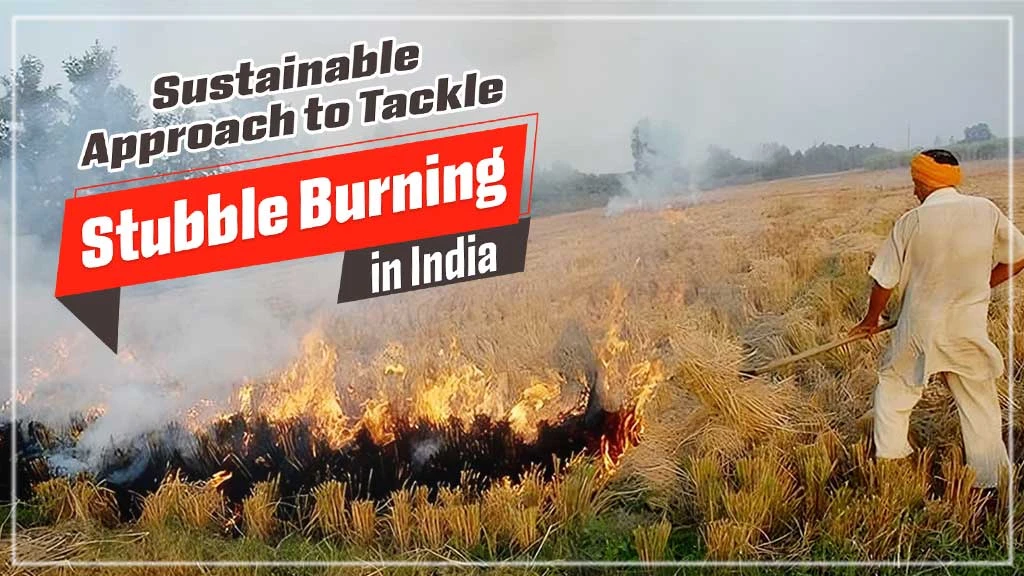
Table of Contents
- What is Stubble Burning?
- What are the Reasons behind Stubble Burning in India?
- What are the Effects of Stubble Burning in India?
- What are the Alternatives to Stubble Burning in India?
- Which Farm Machinery is Used to Tackle Stubble Burning in India?
- What are the Government Initiatives to control Stubble Burning in India?
- Conclusion
What is Stubble Burning?
In agriculture, the crop residue that remains after grain harvesting is known as stubble. Stubble burning is the process of burning the leftovers of crops such as rice, wheat, and other cereal grains that remain after harvesting to clear the field for the next crop. In India, since 2002, stubble burning has been identified as a serious problem. Around 87 MT of crop residue is burned in India annually. Farmers from Punjab, Haryana, Rajasthan and Uttar Pradesh burn an estimated 35 million tonnes of crop waste as a low-cost straw disposal practice to reduce the turnaround time between harvesting and sowing for the first (summer) crop and the second (winter) crop.
What are the Reasons behind Stubble Burning in India?
- It is an easier method for waste disposal as farmers cannot afford new technology that is available to handle crop residue.
- They do not have the other option to utilize the stubble effectively.
- Compared to the use of farm machinery like a Happy Seeder, it is a less expensive alternative for the farmers.
- Stubble burning prevents pest infestation and helps to get rid of weeds.
What are the Effects of Stubble Burning in India?
Let’s have a look at the impact of stubble burning:
Air Pollution
Stubble burning is one of the major contributors to air pollution. Due to stubble burning, toxic pollutants like Carbon Dioxide (CO2), Carbon Monoxide (CO), and Methane (CH4) are emitted, which are very harmful to the people and the environment. Greenhouse gases like CO2, CO, CH4 and N2O lead to global warming. Methane emissions cause a rise in the temperature, thus resulting in climate change. In India, stubble burning occurs mostly in the winter season (October-November), which is why the air is not clean, which leads to the deterioration of the Air Quality Index (AQI). This can be seen particularly in cities like the National Capital Region (NCR). Air pollution leads to serious health problems like asthma, dust allergy, skin and eye irritation, etc.
Nutritional Deficiencies
During stubble burning, various gases in different amounts are released into the atmosphere from crop residues along with other essential nutrients. These gases include nitrogen (90%), sulphur (50%), phosphorous (25%), potassium (20%), and many others. One ton of rice straw contains around 400 kg carbon, 25 kg potassium, 5.5 kg nitrogen, 2.3 kg phosphorous, and 1.2 kg sulphur. Thus, burning of rice straws results in the release of these nutrients into the environment while the soil remains devoid of them.
Less Fertile Soil
Stubble burning has a negative effect on soil productivity as it burns all the nutrients of the soil after burning the husks. It transfers heat into the soil, which causes the soil to lose moisture, thus adversely affecting the soil. Organic matter plays a critical role in soil productivity and nutrient retention, which is destroyed through stubble burning and leads to soil degradation. It results in the depletion of the nutrients such as nitrogen, phosphorus, and potassium (NPK). Agriculture is also affected by stubble burning as the pollutants directly or indirectly affect the soil plants and sometimes lead to the death of the plant.
Effects on Health
Buring stubbles generate a substantial amount of gases and particulate matter, such as carbon dioxide, carbon monoxide, nitrogen oxides, sulphur oxides, etc. The carbon dioxide and carbon monoxide weaken the ozone layer, and direct UV rays towards Earth can be harmful to the skin. Crop residue burning can result in several health risks, including asthma, bronchial asthma, acute respiratory infections (ARI), eye irritation, and many others. Different age groups face different health problems because of residue burning, such as children having an increased risk of ARIs due to their elevated respiratory rates.
Effect on Aquatic Ecosystem
Carbon dioxide is the primary gas responsible for greenhouse effect among different gases produced during stubble burning. Its concentration is increasing day by day. Since carbon dioxide is the most oxidized and thermodynamically stable form of element, converting it into other compounds is quite difficult. The only possible procedure to get rid of it is to collect and store it. Although oceans are the primary sink for carbon dioxide emission, they enhance the oceans’ acidity, which further affects the aquatic ecosystems.
What are the Alternatives to Stubble Burning in India?
Farmers can switch to alternatives to stubble burning, which can result in an environmentally friendly approach and also help them earn additional income. It can be used as:
- Cattle Feed (Fodder)
- Compost Manure
- Ethanol Production
- Biofuel and Biogas Production
- Handicraft Making
- Straw Addition in the Soil
Which Farm Machinery is Used to Tackle Stubble Burning in India?
There are several sustainable alternatives to tackle stubble burning, like farm machinery, which facilitates the management of the crops without burning. Let’s look at how farm machinery can help tackle this serious problem.
Straw Reaper
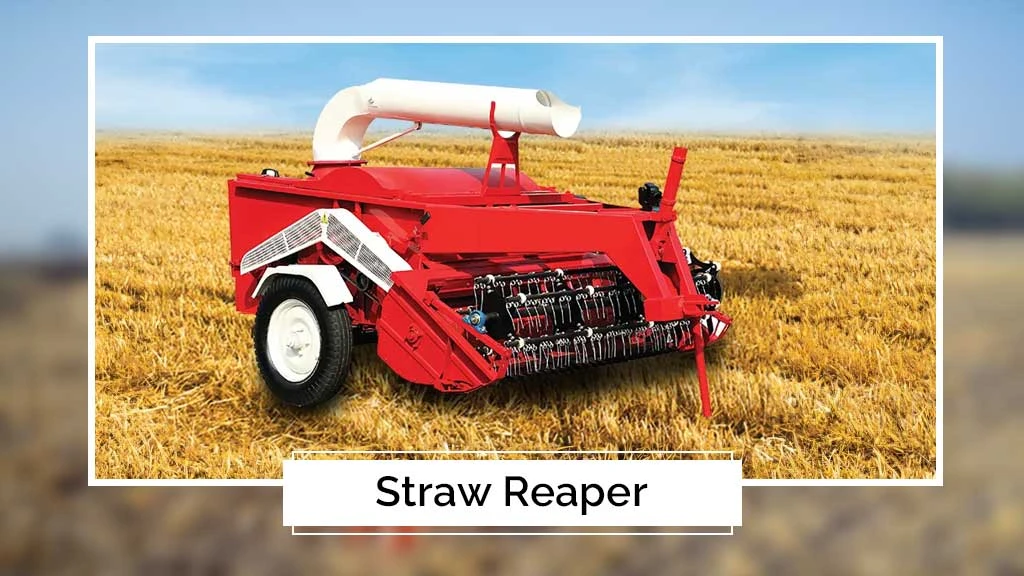
Straw reaper machine is a chopper machine used to cut and collect leftover wheat and paddy stubbles. The leftovers are repurposed as fodder or raw materials for different uses, which promotes sustainability and stops the need to burn stubble. With the use of straw, farmers earn additional income, and it helps them to participate in saving the environment.
Mulcher
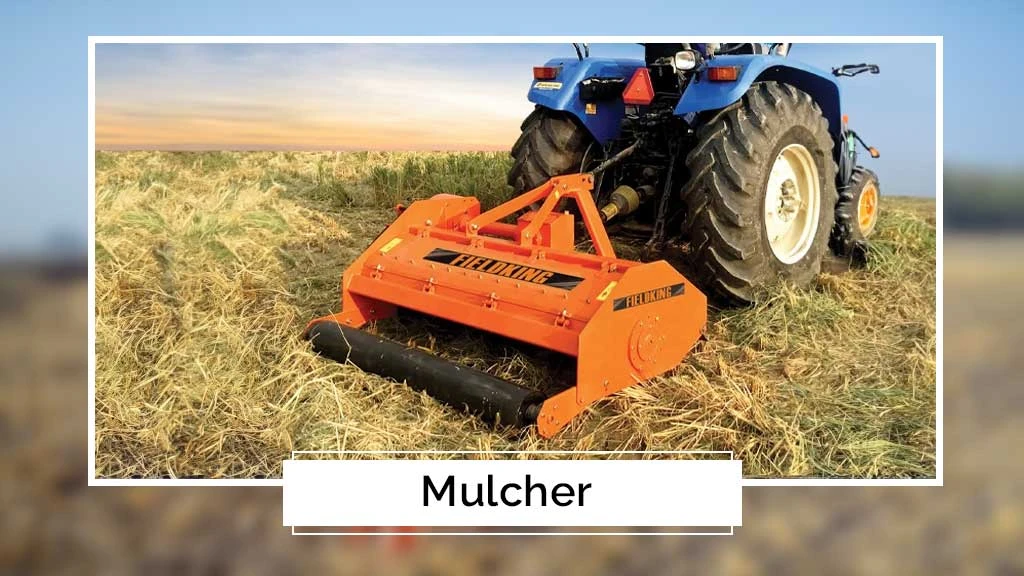
Mulcher is an agricultural implement that helps to cut and shred stubbles and convert them into mulch to be left over on the field. It contributes to the overall growth of the soil by enhancing soil health and fertility.
Hay Rake and Baler
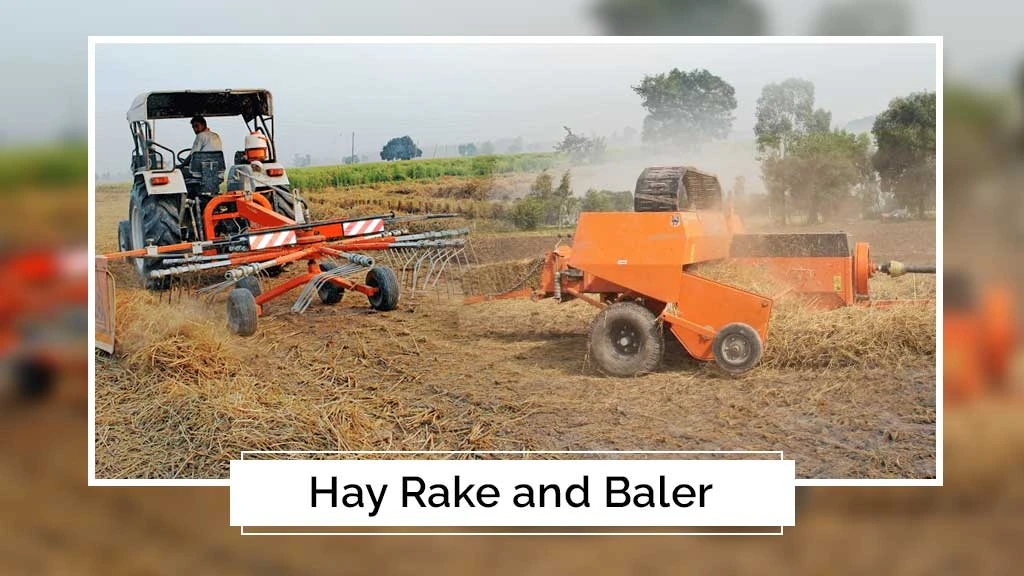
Hay Rake is used to collect hay straws from windrows for later collection. A baler is used after the hay rake makes a row of crop residues left over by a combine harvester. Thus, a baler raked crop residues into bales that are easy to manage, store and transport.baler raked crop residues into bales that are easy to manage, store and transport.
Happy Seeder and Super Seeder
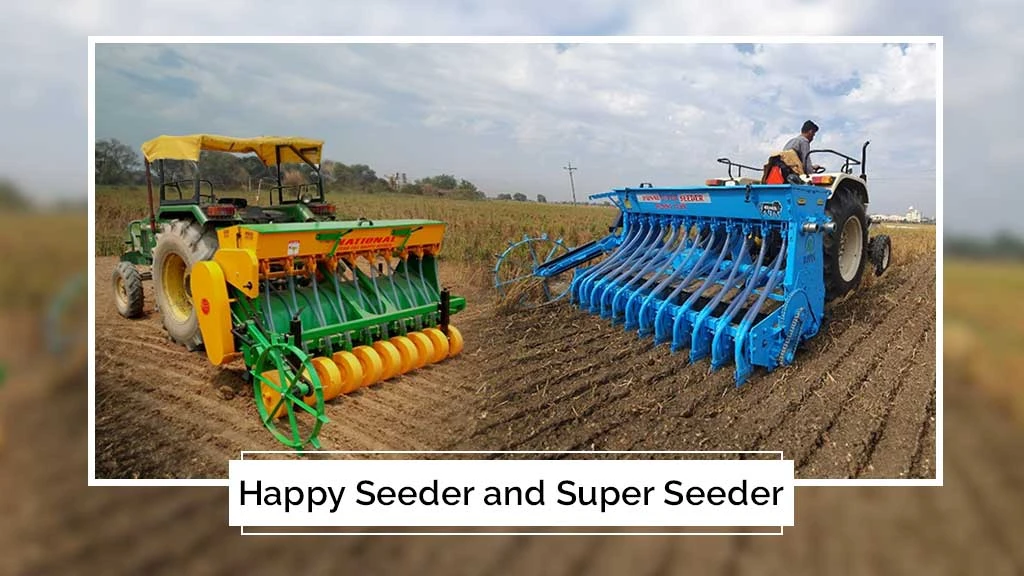
Happy Seeder is an implement used to sow seeds in the field with standing stubbles, while Super Seeder is a 3-in-1 solution used for tilling, sowing seeds, and covering seedbeds. It is best recommended for wheat sowing. It directly touches the root of the soil and sows seeds. It is more expensive than a happy seeder because of its complex mechanism and higher horsepower requirements. Both machineries eliminate the need for post-harvest burning of crop residues.
Zero Till
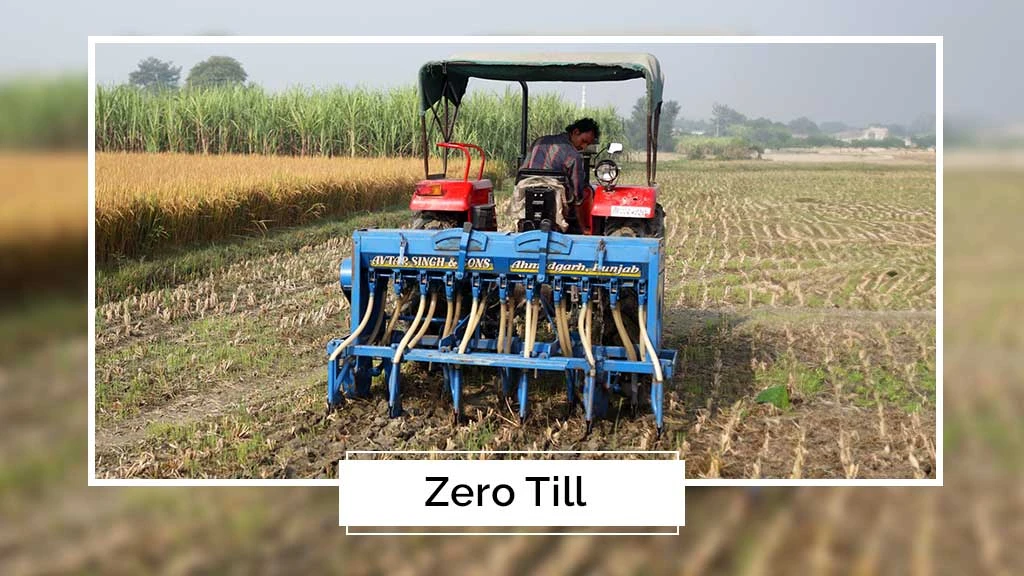
Zero Till is an important implement that is used to plant seeds directly into untilled soil or soil with minimal disturbance or without disturbing the soil through tillage. It can be done without burning the residue of the previous crop. Hence, it is beneficial in preventing stubble burning.
What are the Government Initiatives to control Stubble Burning in India?
Following are the measures and initiatives taken by the government to control stubble burning in India:
- In 2023, the Central Government has given INR 3,333 crores under the Crop Residue Management Scheme for the management of paddy straw.
- The State Governments of Punjab and Haryana were advised by the Commission for Air Quality Management (CAQM) in NCR and adjoining areas to mobilize the entire state administrative machinery to take all preventive and corrective measures for control of stubble burning.
- The commission is also monitoring the paddy stubble burning incidents and taking up with the State Governments of Punjab, Haryana and Uttar Pradesh daily.
- A microbial cocktail technology named “PUSA DECOMPOSER”, which is the Bio-Decomposer technique for converting crop stubble into compost, was developed by the Indian Agricultural Research Institute (IARI). These decomposers increase the soil fertility of the crop and are a good alternative for crop burning.
- In some cases, the government provides subsidies to the farmers for investing in machinery like hay rakes, balers, super seeders, straw reapers, etc.
Conclusion
Stubble burning is a serious problem which is destroying the environment, human health, and soil health. Air pollution causes health issues like respiratory problems, eye irritation, pulmonary diseases, etc. To tackle stubble burning, farmers can use straw for different purposes, like livestock feed and fodder, biofuel and biogas production, mulching, ethanol production, paper industries, and more. The government should take more and more initiatives to give subsidies and schemes to the farmers to help them buy farm implements so they can easily switch to the alternatives of stubble burning.
Sustainable Approach to Tackle Stubble Burning in India पर अक्सर पूछे जाने वाले प्रश्न
1. What is stubble burning?
Stubble burning is the process of burning the stubble of crops such as rice, wheat, and other cereal grains that remain after harvesting to clear the field for the next crop.
2. Why do farmers burn stubble?
Farmers burn stubble to quickly prepare their land for the next crop. Burning the stubble is a less expensive alternative for them.
3. How can we stop stubble burning?
With the use of farm machinery like baler, straw reaper, super seeder and zero till, we can ensure effective crop residue management.
4. Does stubble burning reduce soil quality?
Yes, stubble burning burns all the nutrients of the soil and transfers heat into the soil, which causes the soil to lose moisture, which leads to soil degradation.
5. How much stubble is burnt in India?
Farmers from Punjab, Haryana and Uttar Pradesh burn an estimated 35 million tonnes of crop waste from their wheat and paddy fields.
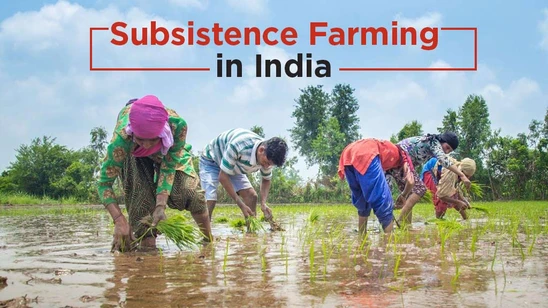

सम्बंधित ब्लॉग्स















